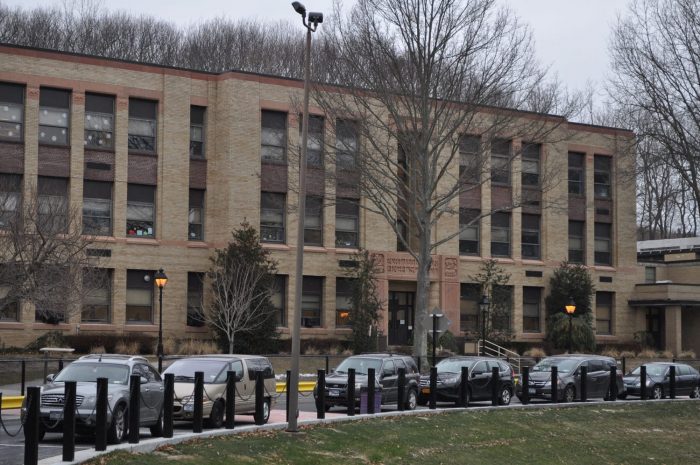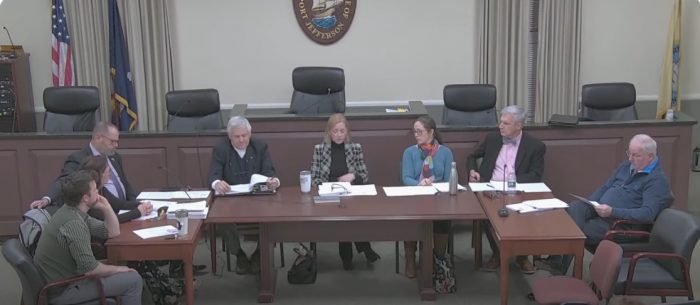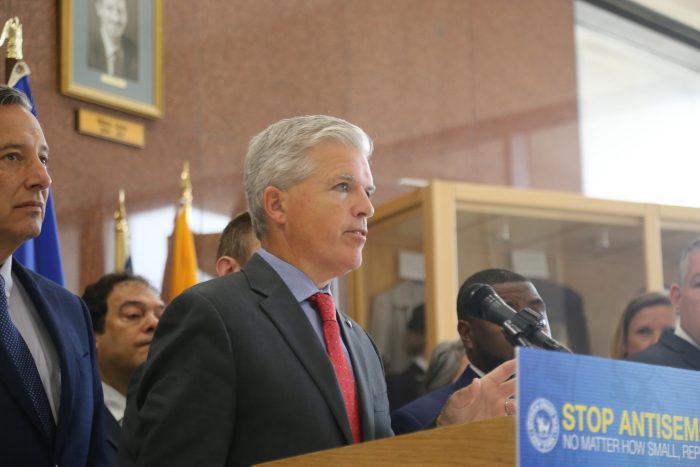On Wednesday, Jan. 10, The Village of Port Jefferson Board of Trustees held its first work session of 2024.
The Education & Arts Conservancy
At the request of Mayor Lauren Sheprow, Lisa Perry, president of the Port Jefferson Harbor Education & Arts Conservancy, kicked off the three-hour work session to discuss the conservancy’s relationship with the village.
Perry explained to board members that the conservancy is a non-profit working on behalf of the Port Jefferson Village Center and the Jeanne Garant Harborfront Park. The conservancy was established almost two decades ago to help fundraise for village center activities and projects.
“We’ve probably donated over $300,000 either in kind or money over the years,” she said.
Perry reviewed the many fundraising projects the group has undertaken recently, including grants to purchase the Zamboni for the skating rink, funds for the beautification of the harbor front, and the restoration of Rocketship Park. The group is discussing a possible fundraiser to obtain a bandshell for the harbor front. Perry tells the board that the group is in the process of revamping its mission statement and is hoping to attract new members.
A discussion ensued about the current written agreement between the conservancy and the village and to establish regular meetings with village representatives.
“The village can’t solicit donations from the conservancy,” village treasurer Stephen Gaffga said.
Instead, the village and the conservancy can keep an open dialogue and collaborate on projects.
Village attorney David Moran wrapped up the discussion by informing the board that he had reviewed the agreement stating,“It is fine as is.”
“I don’t want to over-lawyer a very good agreement and add confusion,” he said.
Revamping tech security
Village clerk Sylvia Pirillo put forth a resolution to accept the proposal by Island Tech Services to enhance the security of the village servers and emails. Emails will be mitigated to ‘.gov’ addresses, and Microsoft SharePoint will be installed for interoffice communications and document reviews.
“This has been a long time coming. We’re looking forward to this very needed change,” she said.
Pirillo also informed the board that the village received about 60 proposals from vendors to revitalize the village’s website and calls for a resolution to accept a proposal from CivicPlus web designer.
“We are confident in the choice of CivicPlus and are very excited to move forward,” she said.
Bluff storm erosion
Sheprow updated the board on storm damage placing emphasis on the Port Jefferson Country Club bluff. Sheprow reports that two sections of the east side of the bluff were damaged by recent storms, and additional damage occurred on the west side of the bluff from the storm overnight.
Pirillo put forth a resolution to accept the proposal from GIT Consulting to move forward with aerial drone surveillance of the bluff to help surveyors follow topological changes in the bluff over time.
“We need to proceed with these sooner rather than later, especially given recent [storm] events,” Pirillo said.
Code enforcement
A draft letter to be sent to all Port Jefferson business owners from the building and planning department’s new director, Andrew Freleng, was also discussed. The letter encourages owners to comply voluntarily with the village’s building and zoning laws.
“This is a first letter, is putting everyone on notice,” says Moran.
The draft letter suggests business owners check in with the building and planning department with questions and concerns. The letter can be found in the appendix of the meeting agenda for this work session.
Ethics guidelines
Attorney Steven Leventhal, ethics counsel to the village, continues the ongoing discussion about new ethics guidelines and the process for forming an ethics review board.
Leventhal describes a four-part process to developing a robust ethics program for the village:
- Adopt the ethics code.
- Produce educational materials.
- Have the board of ethics implement the code.
- Have a presence on the website for submitting inquiries, accessing the code, and accessing the educational materials.
The Mayor will nominate the members, and the board will appoint them. Community members are welcome to put forward their names or someone else for consideration.
Leventhal further comments that there is an “epidemic of ignorance in ethics out there. It takes a real commitment of understanding [by ethics committee members].”
Comments from the public about the new ethics guidelines are open until the next board of trustees meeting, scheduled for Jan. 31. Comments can be sent to the village clerk at [email protected]



























